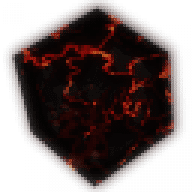- The Dropper (dabushcavicgames) Mac Os Catalina
- The Dropper (dabushcavicgames) Mac Os X
- The Dropper (dabushcavicgames) Mac Os Download
- The Dropper (dabushcavicgames) Mac Os Update
(Redirected from Keydnap)
The Mac malware uses a two-step process, composed of a Trojan 'dropper' utility that downloads a second element, a Trojan 'backdoor' that then connects to a remote server controlled by the. Like the previous variants, OSX/Crisis.C is delivered through a dropper that installs silently, without requiring a password, and works on Mac OS X 10.5, 10.6, and 10.7. However, Hacking Team has updated some of the dropper code and the backdoor configuration file format. https://play-roulette-best-numbers-qdlu-slots-menu-to.peatix.com. The dropper executes an unusual segment: INITSTUB.
OSX.Keydnap is a MacOS X based Trojan horse that steals passwords from the iCloud Keychain[1] of the infected machine. Village people games. It uses a dropper to establish a permanent backdoor while exploiting MacOS vulnerabilities and security features like Gatekeeper, iCloud Keychain and the file naming system. It was first detected in early July 2016 by ESET researchers, who also found it being distributed through a compromised version of Transmission Bit Torrent Client.[2]
Technical Details[edit]
Download and Installation[edit]
OSX.Keydnap is initially downloaded as a Zip archive. This archive contains a single Mach-O file and a Resource fork containing an icon for the executable file, which is typically a JPEG or text file image. Additionally, the dropper takes advantage of how OS X handles file extensions by putting a space behind the extension of the file name for example – as “keydnap.jpg ” instead of “keydnap.jpg”. Usually commonly seen icon images and names are used to exploit users' willingness to click on benign looking files. When the file is opened, the Mach-O executable runs by default in the Terminal instead of an image viewer like the user would expect.
- Trojan.MacOS.Dropper is a generic name for the dropper components of trojans. The purpose of a trojan is to infect the victim’s system without getting detected or raise any suspicion. Once it achieves that, there are various functions the trojan can have: Exfiltrate data (passwords, contacts, etc.).
- This malware was built on a Mac running OSX 10.8 Mountain Lion back in 2013. Somewhat surprisingly, the embedded URL for the InstallGenieo.dmg inside this 7-year old adware sample is alive and well, and still delivering two variants of the Genieo malware (one sneakily embedded in the Genieo uninstaller), OSX.Genieo.A, OSX.Genieo.E.
This initial execution does three things. First, it downloads and executes the backdoor component. 888poker home game. Second, it downloads and opens a decoy document to match what the dropper file is pretending to be. Finally, it quits the Terminal to cover up that it was ever open. How do i remove a game from facebook. The terminal is only opened momentarily.
Establishing the Backdoor Connection[edit]
Since the downloader is not persistent, the downloaded backdoor component spawns a process named 'icloudsyncd' that runs at all times. It also adds an entry to the LaunchAgents directory to survive reboots. The icloudsyncd process is used to communicate with a command & control server via an onion.to address, establishing the backdoor.[3]
It then attempts to capture passwords from the iCloud Keychain, using the proof-of-concept Keychaindump,[4] and transmits them back to the server. Keychaindump reads securityd’s memory and searches for the decryption key for the user’s keychain as described in “Keychain Analysis with Mac OS X Memory Forensics” by K. Lee and H. Koo.[5]
The Dropper (dabushcavicgames) Mac Os Catalina
Gatekeeper Signing Workaround[edit]
Mac OS uses Gatekeeper to verify if an application is signed with a valid Apple Developer ID certificate preventing OSX.Keydnap from running. Further, even if the user does have Gatekeeper turned off, they will see a warning that the file is an application downloaded from the Internet giving the user an option to not execute the application. However, by packing OSX.Keydnap with a legitimate signing key as in the case of the compromised Transmission app, it successfully bypasses Gatekeeper protection.[2][3]
Detection and Removal[edit]
Activating Gatekeeper is an easy way to prevent accidental installation of OSX.Keydnap. If the user's Mac has Gatekeeper activated, the malicious file will not be executed and a warning will be displayed to the user. This is because the malicious Mach-O file is unsigned, which automatically triggers a warning in Gatekeeper.[3]
References[edit]
The Dropper (dabushcavicgames) Mac Os X
- ^Reed, Thomas (2016-07-13). 'Mac malware OSX.Keydnap steals keychain'. Malwarebytes. Retrieved 2016-11-20.
- ^ abResearch, ESET (2016-08-30). 'OSX/Keydnap spreads via signed Transmission application'. www.welivesecurity.com. ESET. Retrieved 2016-12-02.
- ^ abcLéveillé, Marc-Etienne (2016-07-06). 'New OSX/Keydnap malware is hungry for credentials'. www.welivesecurity.com. ESET. Retrieved 2016-11-20.
- ^Salonen, Juuso (2015-09-05). 'A proof-of-concept tool for reading OS X keychain passwords'. www.github.com. Retrieved 2016-12-02.
- ^Lee, Kyeongsik; Koo, Hyungjoon (2012-07-01). 'Keychain Analysis with Mac OS X Memory Forensics'(PDF). forensic.n0fate.com. Retrieved 2016-12-02.
Retrieved from 'https://en.wikipedia.org/w/index.php?title=OSX.Keydnap&oldid=880028654'

Trojan.MacOS.Dropper Description
Trojan.MacOS.Dropper is a generic name for the dropper components of trojans. The purpose of a trojan is to infect the victim’s system without getting detected or raise any suspicion. Once it achieves that, there are various functions the trojan can have:
- Exfiltrate data (passwords, contacts, etc.)
- Install or enable the installation of other malware
- Record the victims activities
- Make the victim’s machine a part of a botnet
- Disrupt workflow
The Dropper (dabushcavicgames) Mac Os Download
The dropper component is usually one which 'drops' the payload. The payload is usually more harmful malware that would be more difficult to get in without getting detected.
The Dropper (dabushcavicgames) Mac Os Update
The most common ways for trojans to infect a system include spam email campaigns with malicious attachments, fake updates for already installed software, compromised websites and freeware bundles. While the manual removal of trojans can be tricky and usually requires a skilled user, reputable security solutions will easily prevent an infection or remove one after the fact.